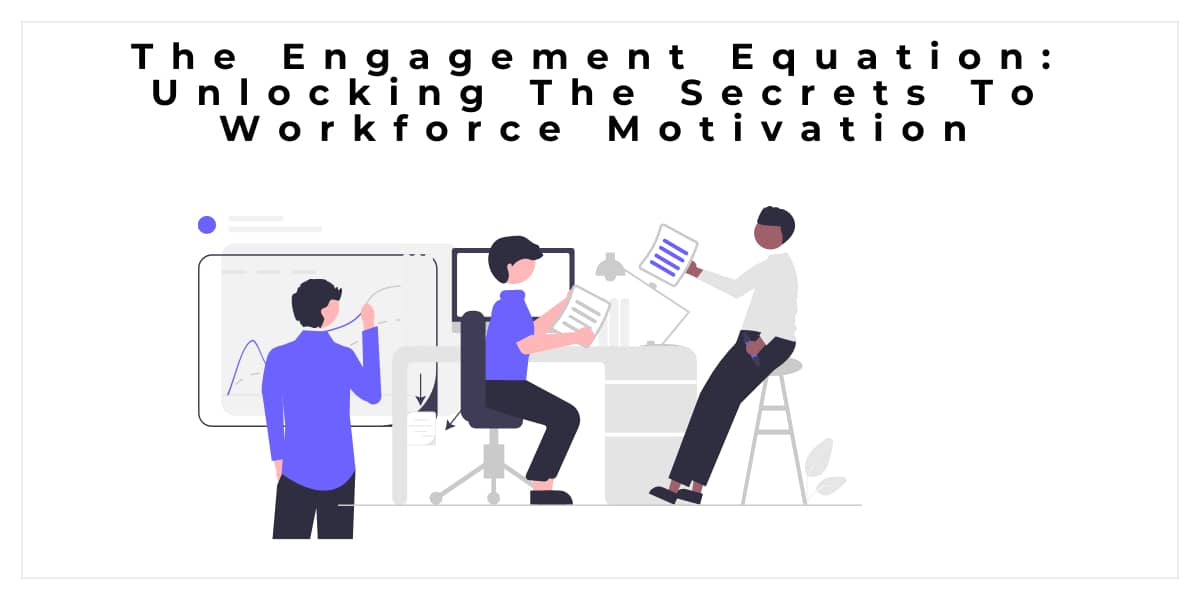Companies constantly seek ways to motivate and engage their employees in today's changing business landscape. The success and productivity of a company heavily depend on having dedicated staff. However, how can businesses ensure that their employees stay engaged in their work? The answer lies in understanding the equation – a set of factors that create an environment for motivating employees. In this post, we will delve into the components of the equation and explore effective strategies for unlocking the secrets to workforce motivation.
Creating Work Opportunities
Whether small or large, organizations that want to increase employee involvement must ask how to increase employee engagement, and offering ample work opportunities is one of the most important things companies can do to answer this question. Employees are more likely to feel motivated and satisfied when they can witness the impact and value of their contributions. Employers can facilitate this by communicating how each employee's role aligns with goals and values. When employees comprehend how their efforts contribute to a purpose, they feel valued and motivated, resulting in levels of engagement.
Additionally, organizations should provide development opportunities that enable individuals to grow within their roles. By offering training programs, companies empower employees to acquire skills that enhance job satisfaction and personal growth.
Furthermore, team members can expand their horizons by promoting collaboration between departments and experiencing diverse tasks and challenges, fostering a sense of variety.
Nurturing Positive Relationships
Building relationships within the workplace is another aspect of fostering engagement. People thrive when they feel connected to and supported by their colleagues. Managers should prioritize developing connections with their teams by showing an interest in employees, providing consistent feedback, and acknowledging accomplishments.
Additionally, creating a culture of camaraderie among coworkers significantly contributes to a positive work environment. Organizing team-building activities or regular social events can strengthen these connections beyond work interactions. By cultivating an atmosphere that promotes collaboration rather than competition, organizations encourage teamwork while boosting employee morale.
Recognizing Achievement
Recognizing achievements plays a role in enhancing employee motivation and engagement. Employees appreciate being acknowledged for their contributions as they validate their work. Regularly acknowledging individual or team achievements reinforces a culture that values appreciation.
Recognition can take forms, such as praise, awards, or tangible rewards. However, providing recognition that aligns with each individual's preferences and values is crucial. For instance, some teams use a custom challenge coin as a meaningful token of appreciation, giving employees a tangible reminder of their achievements and the value they bring to the organization.
Different employees have preferences when it comes to recognition. While some may appreciate acknowledgment, others value personal gestures like a thoughtful note or a one-on-one conversation to convey gratitude.
Promoting a Healthy Work-Life Balance
In the fast-paced world we live in today, achieving a work-life balance is increasingly important for the well-being and engagement of employees. Organizations that embrace this concept create an environment that supports their employees' ability to manage their personal lives effectively.
Businesses need to encourage work arrangements whenever feasible. Providing options such as work or flexible schedules allows employees to balance their work demands with responsibilities. By impacting their ability to manage time and reduce stress levels, organizations contribute to employee satisfaction and motivation.
Ensuring Transparency and Effective Communication
Clear communication from leaders within an organization plays a role in engaging employees and fostering trust. Transparency helps dispel doubts about decision-making processes, business objectives, or potential changes within the company.
Furthermore, it is crucial to establish communication channels that facilitate dialogue among colleagues at all levels of the organization. When employees feel at ease expressing their thoughts and concerns, it fosters an atmosphere that encourages participation.
Conclusion
Motivating and engaging employees requires attention to factors within an organization. By understanding the elements of employee engagement. Such as providing work opportunities, cultivating positive relationships, acknowledging accomplishments, supporting work-life balance, and promoting transparency. Companies can unlock the secrets to motivating their workforce. When businesses prioritize employee engagement through these strategies, they are well-positioned to cultivate a workforce that drives success in today's ever-evolving business landscape.








